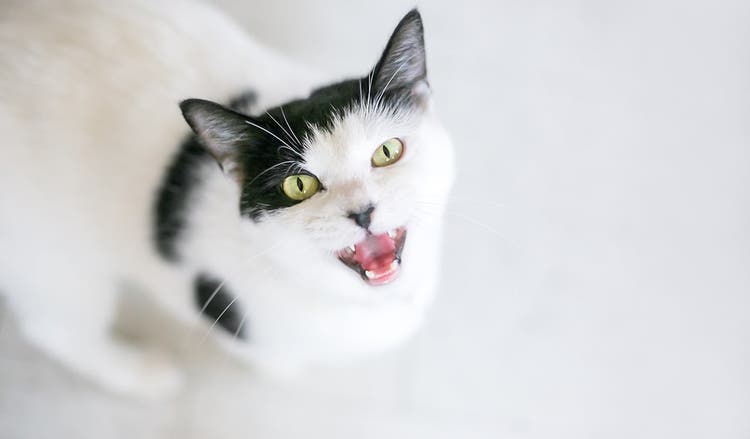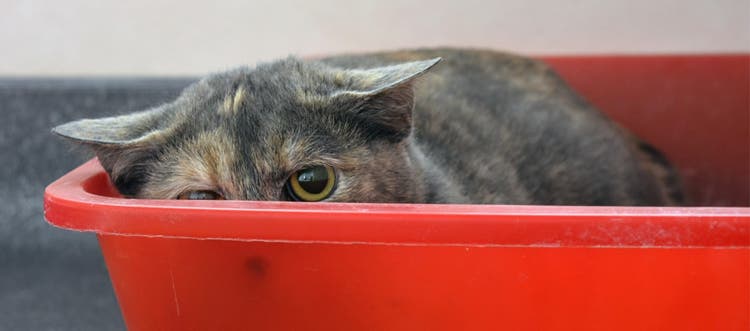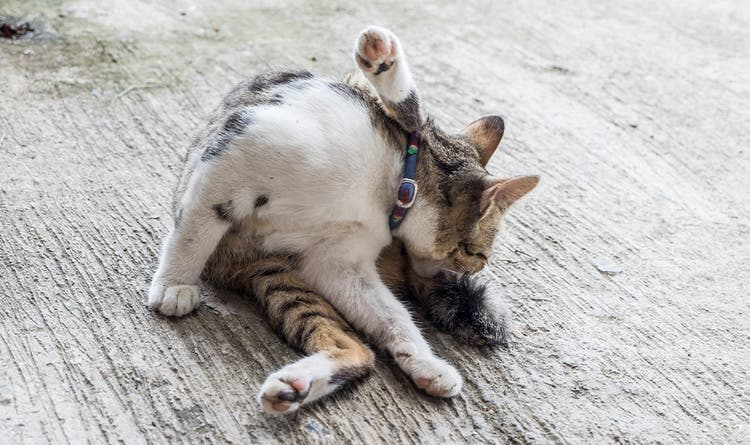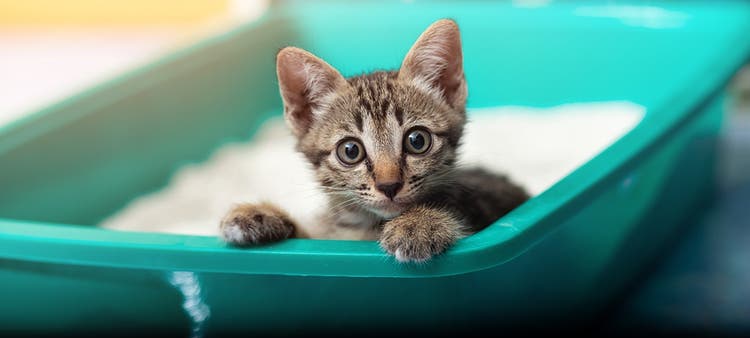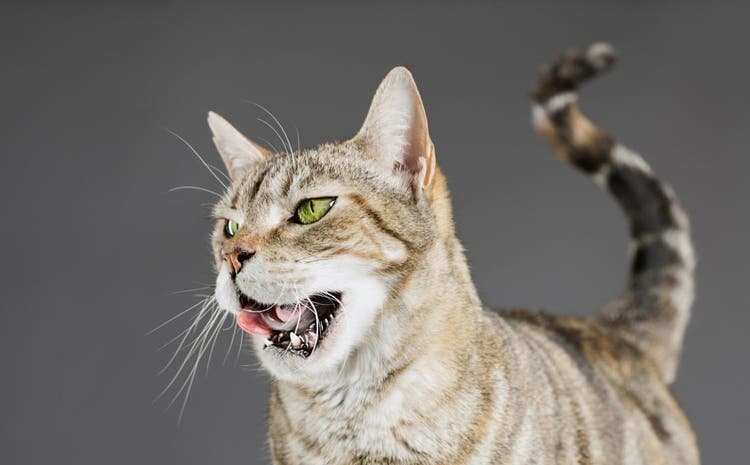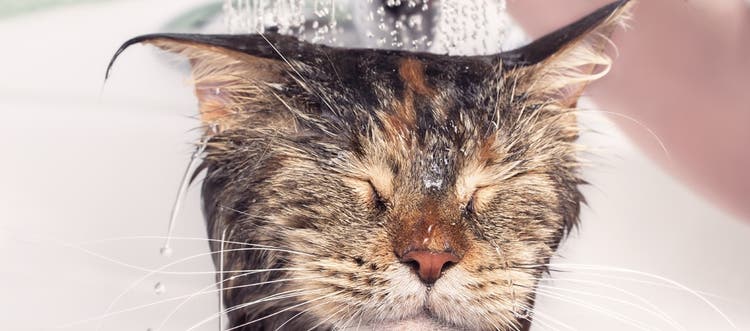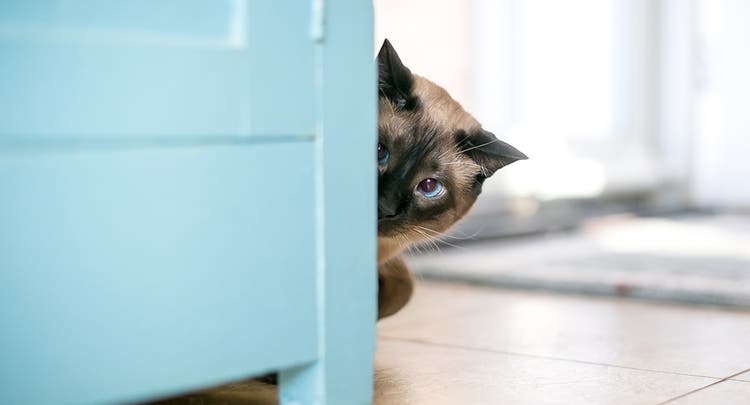Train your dog to be less aggressive around food.
If your dog shows signs of food aggression, know that it has little to do with your dog’s personality and is considered a common, though undesirable, behavior. To help stop food aggression in your dog, it’s important to understand what it is and what you can do about it.
What Is Food Aggression in Dogs?
Food aggression in dogs, also known as food guarding, is a common, natural instinct in which a dog becomes defensive or aggressive around their food. Dogs sometimes learn this behavior as puppies if their litter was fed communally without supervision, but many dog behavioral experts believe that food aggression is simply a genetic trait.
What Are the Signs of Food Aggression in Dogs?
Signs of food aggression can vary, and even easygoing dogs can still display these common signs:
- Growling when any person or pet gets near their food bowl, especially when eating
- Freezing their body or stiffening while they’re eating; this could also include rotating their body to keep eye contact with a perceived “intruder”
- Eating at a faster pace, which can cause digestive issues and make your dog feel unsettled
- Blocking access to their food by rotating to stay between the bowl and anyone else
- Cycling between any of these behaviors; many people incorrectly assume that if the dog is not growling, it’s not food guarding
How to Help Stop Food Aggression in Your Dog
This three-step process will discourage your dog from food guarding and help them get used to having people around during mealtimes. The duration estimates given for each step are just that: estimates. No one knows your dog better than you, so use your best judgment when deciding whether to move on to the next step or extend the current step by a few days or weeks.
If food aggression has become a serious issue for your dog, consider feeding them separately so you can focus on training. In addition, if your dog has a tendency to eat too quickly, try using a food bowl that makes it deliberately hard for your dog to scarf down their meal.
Step 1: Hand-feed Your Dog
Duration: 1 to 2 weeks
At the start of every meal, feed your dog pieces of food from your hand. To avoid accidental nipping, offer the food with a flat, upward-facing palm rather than the tips of your fingers. Some vets recommend using bland food for this phase to make the experience more functional and less like a treat, but if your dog is a picky eater you can use their current food.
Feed a few pieces of kibble at a time, until you’ve fed about three-fourths of your dog’s normal meal. Then, slowly place the rest of the food in your dog’s bowl, and stay close while they eat.
Over time, this exercise will get your dog used to others being near the bowl during meals and help them understand you’re not an intruder. If you have small children, they can stand at your side as long as they remain quiet and don’t make sudden movements.
Tip: If you normally give your dog wet food, it can be off-putting to place it on your hand. If you don’t want to use dry food for training, serve tiny portions of wet food on a small spoon before placing the rest in the bowl.
Step 2: Transition from Hand-feeding to Bowl-feeding
Duration: 1 week
As your dog gets familiar with hand-feeding, gradually reduce the amount of food you hand-feed them. Begin with feeding three-fourths of the portion to half. Continue at this pace for several days, and then transition from half to one-fourth of the portion later in the week.
Step 3: Add a Treat to Their Bowl of Food
Duration: 1 week
After your dog understands that your presence during mealtime isn’t something to worry about, reinforce their progress with positive association.
Begin this step while you’re finishing Step 2. While your dog eats their bowl of food, make a point to get a delicious treat for them. Return to the bowl while your dog is still eating and verbally reward them as you give them the treat. Have your dog take the treat from your open palm so they can internalize positive reinforcement when others approach.
What Should You Not Do to Stop Food Aggression?
One of the first reactions many dog owners have when their pet displays food aggression is to purposely invade their personal space while the dog is eating, grab the bowl and take it away, or reprimand the dog for displaying this natural behavior.
This reaction could reinforce the dog’s negative association with eating and only strengthen their fear about losing their meal. If you’ve done this in the past, don’t worry — just begin at Step 1 of the process outlined above. With patience and praise, your dog will slowly understand that you and other family members aren’t intruders, and that they have no need to guard their food.
References
- American Society for the Prevention of Cruelty to Animals. (n.d.). Food Guarding. Retrieved from https://www.aspca.org/pet-care/dog-care/common-dog-behavior-issues/food-guarding
- Cesar's Way. (2019, October 31). Food Aggression And What To Do About It. Retrieved from https://www.cesarsway.com/food-aggression-and-what-to-do-about-it/
- Whole Dog Journal. (2019, March 21). The Resource-Guarding Warning Signs. Retrieved from https://www.whole-dog-journal.com/behavior/resource-guarding/the-resource-guarding-warning-signs/
Related Articles

New Cat or Kitten: Our Downloadable Guide
Thinking about adding a feline to the family? There are so many emotional, social and physical benefits to owning a cat. Check out our free guide, also available to download!
